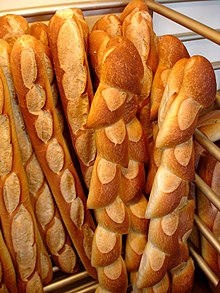Geographic Causes of the French Revolution
While the king demanded more taxes of the common people, France had severe weather patterns which included harsh cold and piles of snow which blocked commonly used roads used for trade and travel. This also stopped wagons carrying wheat and food supplies. Food was already scarce in the 1780’s and the harvest of the two years prior to the revolution (1788-1789) was poor due to the weather. Scientists link this awful weather to a strong El Nino cycle, which was most likely caused by the Laki eruption in Iceland, in 1783. This volcano spewed sulphuric dioxide into the atmosphere which caused a drop in weather all over the northern hemisphere and caused crop failure all over Europe.
When the snow finally melted, it caused floods. In the summer of 1789, a prolonged drought hit France, with blazing hot weather and extremely dry conditions. These two factors combined worsened the situation of the food, destroying the already damaged crops and further worsening the grain supply. Other parts of Europe had adopted the potato as a staple crop, because it was sturdier, could survive a lot more than wheat could, like hail storms, cold weather and even scorched earth tactics used by the military. However, it was hard to transport and store, and considered “exotic” and dirty. Many individuals even tried to replace wheat with the potatoes as a staple crop in France, but wheat remained most popular. Parts of France even banned the potato on the belief that it caused leprosy. When the famine hit, the wheat was hit a lot harder than potatoes, but most of France used wheat. This contributed even more to the famine.
 An average labourer or farmer in France earned fifteen to thirty sous per day, while skilled workers earned around thirty to forty. The average price of bread before was around ten sous, but in 1789 the price had risen to 14.5 sous. The average family needed a minimum of two loaves to survive per day. People who could not afford this became restless and began to attack supply wagons of food in the countryside and riot. Many moved to the cities seeking employment and this contributed to a population growth of hungry, restless civilians.
An average labourer or farmer in France earned fifteen to thirty sous per day, while skilled workers earned around thirty to forty. The average price of bread before was around ten sous, but in 1789 the price had risen to 14.5 sous. The average family needed a minimum of two loaves to survive per day. People who could not afford this became restless and began to attack supply wagons of food in the countryside and riot. Many moved to the cities seeking employment and this contributed to a population growth of hungry, restless civilians.At the same time, rumours were circulating that the wealthy and the aristocrats were purposely withholding bread from the civilians and it was all a big plot against them. They believed the wealthy were plotting against them. Many people blamed the Austrian born “foreigner” Marie Atoinette (Louis XVI’s wife) for spending lavishly on unnecessary things. She also apparently said “Let them eat cake” when asked what to do with the hungry peasants. She of course did not say this exactly but her words were twisted and spread like wildfire. This common enemy united the people against the French court. The gap between the rich and the poor had begun to grow. The factors of hunger, due to crop failure and weather, the increase of the price of bread, and a hatred for the court are all geographic factors that started and fuelled the French Revolution.
Thup
ReplyDeletethup
ReplyDeletethup
ReplyDeleteThup Foo
ReplyDeleteThis comment has been removed by the author.
ReplyDeleteThis was very helpful
ReplyDelete